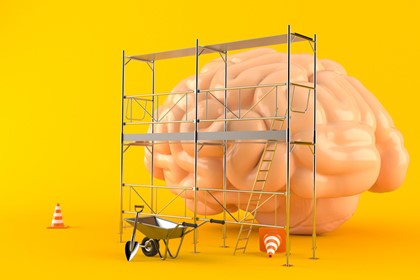The 21st century classroom is much different to the ones from the past where the teachers were the beacon of knowledge for children. These days, as you probably know, teachers need to become the facilitators of knowledge but when do teachers shift to this when integrating technology in classroom practices that develop student ICT capability?
Your aim as a primary teacher when integrating technology in the classroom should be to enable children to reach the stage where the technology they are using becomes sufficiently transparent that they are unaware of its existence.
When planning, you should also decide for the purpose of the use of technology in the classroom to be for the support of subject learning and to develop ICT capability. A task in primary literacy lessons that can be easily achieved.
This is where scaffolding techniques in the classroom comes into play.
So in this article, I am going to show you examples of scaffolding in the classroom to do with integrating technology in classroom practices that involves the development of ICT capability.
How can scaffolding help children?
First, what are the benefits of scaffolding in the classroom? By scaffolding, you are determining the route to be taken by the student on their journey towards ICT capability. There are many routes to be taken so it is important that you consider the ICT techniques, routines and concepts which the child will accumulate en route.
Scaffolding in the classroom provides:
- Clear direction.
- Clear expectations.
- Increasing independence gradually.
- Motivation and momentum.
This is what is scaffolding in education is all about.
General possible scaffolding in the classroom examples include:
- Show and tell.
- Tap into prior knowledge.
- Give time to talk.
- Pre-teach vocabulary.
- Use visual aids.
- Pause, ask questions, pause, and review.

Scaffolding When Integrating Technology
The above examples of scaffolding in the classroom provide a foundation for your understanding of what is to follow. In some way, they are similar, and use requires almost the same techniques.
As I mentioned earlier, when scaffolding to develop ICT capability alongside meaningful contexts such as literacy learning, you do need to consider the components of ICT capability that the child will need to carry out.
Now I am going to show you scaffolding strategies in the classroom. By embedding these, your students will gain the benefits of integrating technology in the classroom.
At times, scaffolding when using technology in the classroom can be provided by the technology itself. It can stimulate and scaffold the ICT processes and higher order thinking skills. However, this type of technology does not develop ICT capability as it does not allow children to use it as a tool and they don’t have full control over it.
Scaffolding lessons in the classroom when using ICT means that you must leave a gap between the students’ abilities and the requirements of the problem situation if you are to ensure that learning occurs. Intentional support must be offered by you by adding to the affordances of the learning environment.
Examples of scaffolding in the classroom include:
- Providing an information sheet to assist the use of the software.
- Providing a clear demonstration on a big screen of the actions to be followed.
- Asking a series of structured leading questions.
- Organising a class discussion of results.
These examples ensure that the benefits of integrating technology in the classroom are exemplified by the fact that they build on a student's knowledge of ICT.
As ICT capability comprises of several components which constitute its development, the predominant sources of learning occurs:
- Routines – primarily through practice.
- ICT techniques – copying a teacher or other children; trial or error.
- Concepts – developed through verbalisation of activities and reflection on ICT experiences. These experiences MUST be carefully structured by you to engage students with examples and non-examples of the concept.
- Processes – developed by multistage ICT techniques in a range of problem situations with an increasing degree of student autonomy and involvement.
- Higher order thinking skills – developed in an environment that encourages exploration when opportunities are presented to the student to decide what software and ICT techniques to use.
If you think about processes more, it is through providing scaffolding here along with higher order thinking skills where it counts the most.
You would need to provide the minimum amount of support by structuring your questioning, prompting, and showing if necessary and then withdraw your support to see what they have learned unaided.
For higher order thinking skills, you need to notice how they are able to carry out complete processes themselves when the scaffolding techniques in the classroom have been taken away.

ZPD and Scaffolding
The zone of proximal development by Vygotsky is defined as:
“The distance between the actual development level as determined by independent problem solving and the level of potential development through problem solving under adult guidance or in collaboration with more able peers” (Potter & Darbyshire, 2005, p. 119).
Scaffolding by Vygotsky, therefore, is to do with giving children challenges that they would be unable to complete on their own, but are able to do so with the help of yourself as a teacher or another adult. The zone of proximal development and scaffolding in the classroom then comes down to the evidence demonstrated in your intervention as a teacher in the following ways:
- You wished to enable the child to develop a skill or concept, or achieve a particular understanding.
- The child as a learner had accomplished the task with your help or;
- The child as a learner had achieved some greater level of independent competence as a result of the scaffolding techniques in the classroom.
If the last condition appears familiar to you, then it is most likely that you could be on the right track to developing ICT capability as it is the only condition that ensures that it is. However, Vygotsky’s theory on scaffolding is not recommended as they do not focus on the development of ICT capability.
If you mainly teach ICT techniques in your lessons, then it is most likely that you would be using scaffolding by Vygotsky.
View our range of online Professional Development Courses for Teachers using technology in the classroom now
Teacher ICT Capability and Scaffolding
Of course, scaffolding learning in a lesson that involves the use of ICT is not going to have a positive impact on student ICT learning if your own level of ICT capability is not up to scratch.
The ICT capability of a teacher is similar to that of a students’ where it is not about acquiring ICT skills and techniques but developing an understanding and judgement about how to use those skills appropriately.
The level of ICT capability of a teacher is important as it will influence a students’ use of ICT. If you have a high level of ICT capability, it would be more natural for you to scaffold the learning of ICT alongside the main learning objectives.
Determining the route to be taken
This is actually part of your planning process and involves you first establishing a starting point in ICT learning so that you can scaffold learning. As mentioned earlier, there are many routes to be taken so it is vital that you determine children’s prior ICT experiences.
Additionally, your decision as to how you will scaffold learning will depend on your knowledge of their capabilities in ICT and ICT resources and tools available. This can be quite difficult, so ensure that you scaffold learning activities with ICT to enable the students to move progressively from one task to the next.
So they might need to know how to take digital photos, how to save their work at intervals during a project and how to use the photo editing tools to manipulate images for example.
You should ensure that you embed formative assessment strategies in your practice as it will help you determine if may have overestimated the capabilities of the children and plan to scaffold learning tasks more carefully to provide more opportunities to build their ICT techniques and routines by developing their ICT capability.
Keeping track of student progress with effective records will need to be an essential teaching practice for you.
To learn more about scaffolding in education when integrating technology in the classroom, click on the button below to continue your professional learning journey with us today.
8 Other Ways to Scaffold in the Classroom
So the top methods you can safely say that they involve the moments when using technology in the classroom. However, here are some other ways for scaffolding in the classroom:
- Give mini-lessons
- Model/demonstrate
- Describe concepts in multiple ways
- Incorporate visual aides
- Give students talk time
- During lessons, check for understanding.
- Activate prior knowledge
- Set them up for success.
To learn more in depth about these teaching strategies in the classroom, click here.